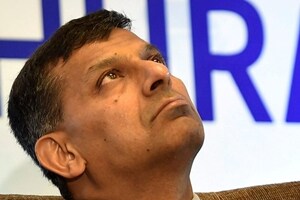CPI inflation jumped to 5.77% in June 2016 (vis-a-vis 4.83% in March). The markets were anticipating a higher number. The good thing is that the worst may just be over. The bad thing is that headline CPI inflation has now jumped by 94 basis points in a span of three months. For any country that targets inflation, this does not augur well. However, hidden behind the number-rhetoric is the fact that the current episode of retail inflation is purely food-driven—unlike earlier ones—and herein lies the policy conundrum.
First, why are we calling this entirely food-inflation-driven? Consider this. For the three-month period, the weighted contribution of vegetables in overall CPI inflation has increased from 1% in March to 17% in June. Although it is not as frightening as it was in FY14—when the contribution of vegetables increased from 7% in March 2013 to a staggering 38% in November 2013—the situation on the ground does look worrisome.
Now, let us jump to the non-food component, i.e. the core-CPI part. Core-CPI has maintained an average of 4.5% between January 2015 and June 2016. The weighted contribution of core-CPI in headline inflation also remained stationary at 36% during the same period.
What do these numbers imply? First, vegetables are undoubtedly the sultan of CPI. Specific commodities, such as potato, green chillies and tomato, made for 64% of the increase in vegetable-inflation since March 2016. Second, core-CPI has remained relatively stable and RBI has been remarkably able to delink food-CPI inflation from becoming generalised, aided well by food management by the government.
Now comes the larger question. The choice of a nominal price anchor and RBI’s migration to a CPI-based anchor from a WPI-based one under Governor Raghuram Rajan in 2014 has been consistent with the overall structure of the economy. The choice of the nominal anchor is based on (1) the size/coverage and (2) the stability of correlation between anchor and policy instruments. We maintain that it is likely that CPI inflation, which is significantly driven up by the food- and primary-articles’ price inflation and is more vulnerable to supply-side shocks, will not have a stable correlation with monetary policy instruments in the short- and medium-term. From that point, if you are explicitly targeting inflation, you should carefully set a nominal anchor, such as CPI-core or CPI excluding the volatile components, which is better correlated with monetary policy instruments as the target variable. The aim is to anchor inflation expectations by committing to an inflation rate. That is, inflation-targeting does not anchor the price level (P), but the expected (and, eventually, the current) rate of price increases (dP).
However, one should also recognise that targeting core inflation instead of overall CPI may not be consistent with the overall structure of the Indian economy as explained above, and may accentuate cross-subsidisation between households and those sectors which form the part of core-CPI. Furthermore, although core-CPI is relatively less volatile, it may not be an appropriate nominal guidance at the current juncture, given the complexities. For example, core-CPI contains items like the service sector that faces supply bottlenecks in various segments (healthcare, education, etc), as well as items like clothing and footwear which have unique characteristics—non-discretionary and non-leveraged—and may not respond to monetary policy signals in the current CPI formulation. Therefore, it may be better to define a relatively less volatile CPI for policy purposes.
After doing a number of combinations, we feel a nominal anchor, which is derived as CPI excluding vegetables, may be the most suitable candidate. The rationale for excluding vegetables is that these items are mostly seasonal and cyclical in nature, and hence bring aberrations in monetary policy formulation. Another factor explaining our proposed choice of anchor is the relative stability of this measure over all the other measures. However, even after the removal of cyclical items, our results show that the volatility of such a measure is the lowest across all measures and also a weightage of around 94%. Alternatively, such a construct reveals the limitations in choosing a CPI-based policy anchor.
Interestingly, as the accompanying table shows, in all such cases, the average CPI hovers around 5.5-6.0%—the higher end of RBI 4-plus-minus-2% inflation-target. Hence, we recommend that even if we continue with inflation-targeting in the long run, the target needs to be revised upwards from 4% to 5-5.5% or so. We should introduce an asymmetric inflation-targeting around the aforesaid mean of 5-5.5%, with a smaller deviation on the upside (5-5.5% +1%) and a higher deviation on the downside (say, 5.5%-2%). Hence, the band becomes 3-3.5%-6-6.5% over the medium-term. We believe this will send the right signal to the market, in the sense that the government and RBI will have a much lower level of tolerance if inflation moves higher as compared to a downward movement. The government and RBI can also link inflation-targeting to business-cycles by explicitly specifying the sacrifice ratio in public domain.
Before we end, a small anecdote. The business cycle mirrors the timetable of the election cycle. Incumbent governments use restrictive policies early in their elected tenure, raising unemployment to reduce inflation. At a later date, as elections approach, policy priorities change towards employment generation. In this respect, this highlights the time-inconsistency behaviour of any government. Hence, don’t be surprised if future policies become more flexible and continue to be accommodative!
(With contributions from Saket Hishikar, economist, SBI)The author is chief economic advisor, SBI. Views are personal
